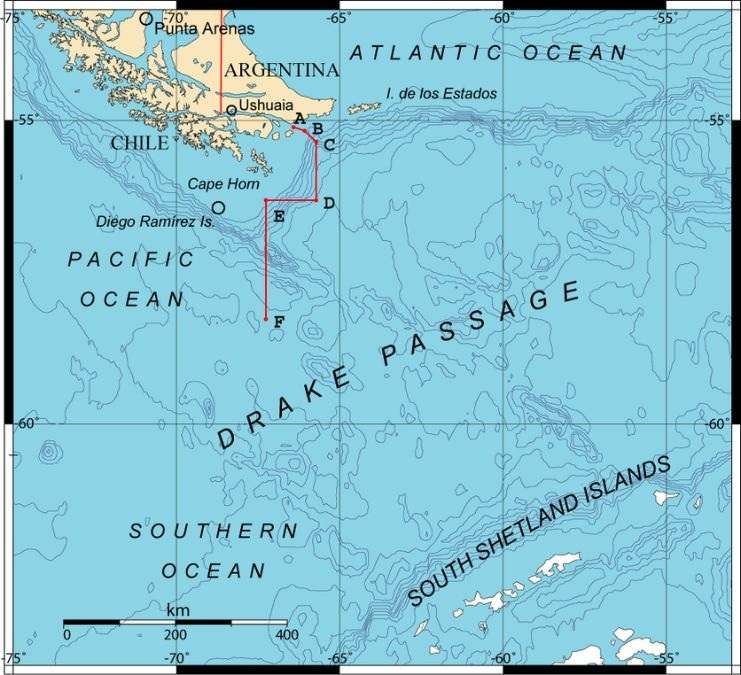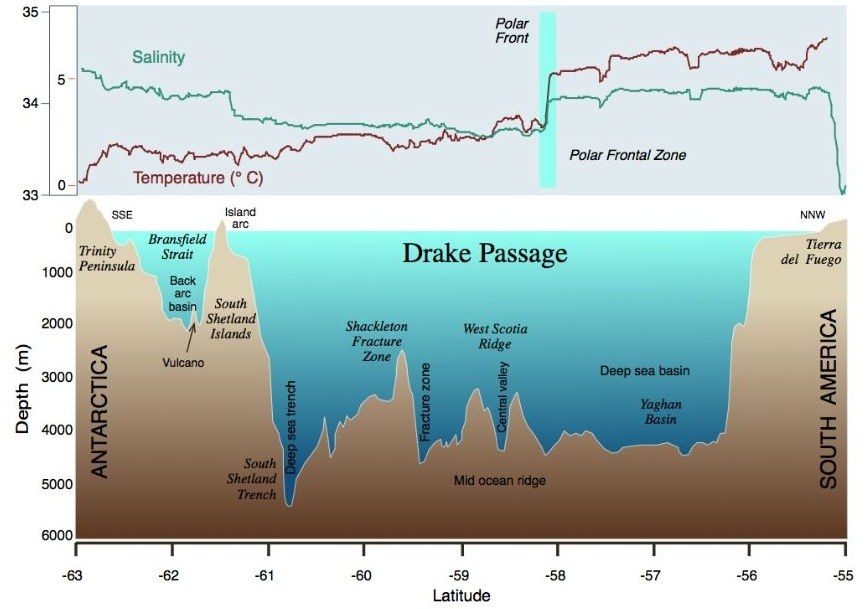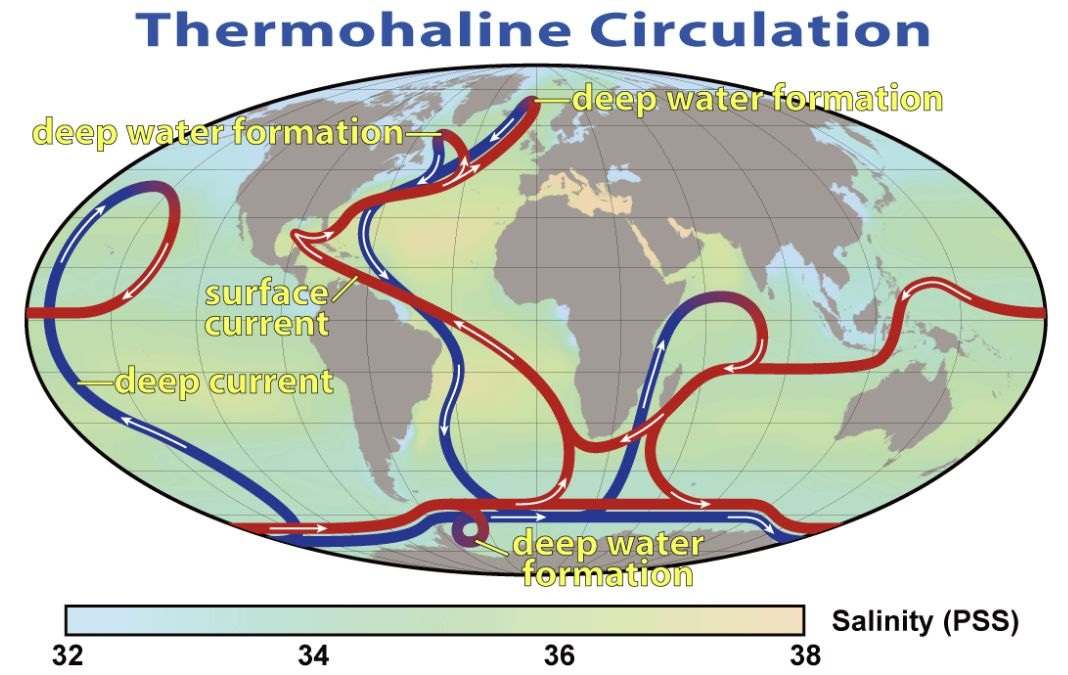At first glance, the meeting point of the Pacific and Atlantic Oceans looks like a dramatic clash between two separate bodies of water. The difference in water color, often observed in places like Cape Horn, the Gulf of Alaska, and the Panama Canal, creates the illusion that these oceans don’t mix.
Many viral images and videos reinforce this belief, making people wonder: Do the Pacific and Atlantic Oceans actually mix? The answer is yes, but the process is much more complex and slower than one might expect. The interaction between these two vast oceans is governed by several scientific factors, including salinity, temperature, water density, and ocean currents.
Where Do the Pacific and Atlantic Oceans Meet?

There are several key locations where the Pacific and Atlantic Oceans come into contact:
Cape Horn, Chile: The southernmost tip of South America, where the Pacific meets the Atlantic in the Drake Passage, one of the most turbulent oceanic regions in the world.
Gulf of Alaska: A famous site where the two oceans create a distinct boundary due to their different densities and sediment compositions.
Panama Canal: A man-made waterway that provides a controlled connection between the two oceans, allowing ships to travel between them.
While these locations showcase the meeting of the two oceans, their mixing is a slow and complex process influenced by multiple factors.
Science Behind It: How Do Magnets Work?
Why Do the Pacific and Atlantic Oceans Look Separate?

One of the reasons people think the Atlantic and Pacific Oceans don’t mix is the visible boundary where they meet. This boundary, often observed in the Drake Passage or off the coast of Alaska, is caused by a difference in salinity and density between the two oceans. When waters with different properties come into contact, they take time to blend. Instead of mixing instantly, they form a gradient where the differences gradually level out.
A similar effect can be observed when a river meets the ocean—freshwater and saltwater don’t immediately mix because they have different densities. However, over time, they do blend, just like the Pacific and Atlantic Oceans.
Salinity
Salinity, or the amount of salt in water, plays a major role in how quickly ocean waters mix. The Atlantic Ocean has a higher salt concentration than the Pacific Ocean. This is because the Atlantic experiences higher evaporation rates due to its climate, while the Pacific receives more rainfall, which dilutes the salt content.
Since saltier water is denser, it tends to sink, while less salty water remains near the surface. This creates a natural layering effect, where the waters remain separate for longer before gradually blending. This slow mixing process makes the boundary between the two oceans more noticeable.
Temperature Differences
Temperature is another factor that affects how the Pacific and Atlantic Oceans interact. The Atlantic Ocean tends to be warmer, particularly in its tropical regions, while the Pacific Ocean is cooler in many areas due to deep, cold currents rising to the surface.
Because warm water is less dense than cold water, the difference in temperatures further slows the mixing process. Warmer Atlantic water stays near the surface, while colder Pacific water moves underneath, creating a layered effect that takes time to blend.
Ocean Currents
One of the biggest reasons why the Pacific and Atlantic Oceans don’t mix instantly is the presence of strong ocean currents. These currents act like invisible walls, keeping waters flowing in different directions.
For example:
The Gulf Stream, a powerful Atlantic current, moves warm water from the equator toward Europe.
The North and South Pacific Gyres circulate water differently, forming a natural barrier between the two oceans.
Because these currents push water in opposite directions, the mixing process is much slower than in a still body of water.
Science Behind It: How Do Thermometers Measure Temperature?
Do the Pacific and Atlantic Oceans Ever Mix?

Despite their visible boundary, the Pacific and Atlantic Oceans do mix—just not immediately. Deep ocean currents play a crucial role in blending these waters over time.
This process, called thermohaline circulation, is often referred to as the global ocean conveyor belt. It moves water around the planet based on differences in temperature and salinity. Cold, salty water sinks in the North Atlantic, travels deep into the ocean, and resurfaces in the Pacific, ensuring that all the world’s oceans are ultimately connected.
However, thermohaline circulation is extremely slow, taking hundreds to thousands of years to complete one full cycle. Over time, the waters of the Atlantic and Pacific Oceans gradually mix, even though their differences remain visible at their meeting points.
Science Behind It: Why Does Ice Float On Water?
Other Places Where Water Bodies Resist Mixing
The phenomenon of slow-mixing waters is not unique to the Atlantic and Pacific Oceans. Similar effects occur in other parts of the world:
The Mediterranean Sea and the Atlantic Ocean (Strait of Gibraltar): The Mediterranean Sea has a much higher salinity than the Atlantic, creating a noticeable boundary where the two meet.
The Baltic Sea and the North Sea: Due to the lower salinity of the Baltic Sea, its water forms a clear distinction when it meets the North Sea.
The Amazon River and the Atlantic Ocean: The massive outflow of freshwater from the Amazon creates a distinct boundary where it meets the salty ocean.
These examples show that differences in salinity, temperature, and currents can cause water bodies to remain separate before eventually mixing.
Science Behind It: How Do Airplanes Fly?
Conclusion
Do the Pacific and Atlantic Oceans mix? Yes—but not as quickly as one might expect. The differences in salinity, temperature, density, and ocean currents create a visible boundary where they meet, making it seem as though they remain separate. However, deep ocean currents and thermohaline circulation gradually blend their waters over time.
The idea that the Pacific and Atlantic Oceans don’t mix is a myth, but it is based on real scientific principles. The differences in salinity, temperature, density, and ocean currents create a noticeable boundary where they meet, making it seem like they remain separate.
Comments
All Comments (0)
Join the conversation